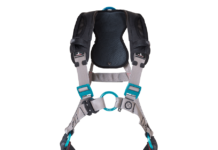The Slater Technology Fund says it has committed $200,000 to Aquanis, a North Kingstown, R.I.-based start-up developing a device that promises to improve efficiency and extend the service life of utility-scale wind turbines.
According to the Slater Technology Fund, Aquanis aims to reduce the cost of wind energy and is working toward reaching the U.S. Department of Energy’s goal of quadrupling domestic wind power generating capacity by the year 2030.
Aquanis was founded by Neal E. Fine, who brings more than 20 years of experience in research and development in fluid dynamics and aeronautical systems in support of the energy industry, among others. In addition to Fine, who serves as CEO, the Aquanis management team includes President Shmuel Halevi and Chief Technology Officer John A. Cooney, along with several other notable advisory board members.
The Slater Technology Fund asserts that the cost of wind energy can be reduced by deploying larger, more efficient and durable wind turbines – and in order to build such turbines, designers must find a way to mitigate fatigue loads in the turbine blades, which are caused by unsteady aerodynamic forces. Considering that all of the remedies tried to date have included moving parts and are costly and complex to implement, Aquanis decided to develop a new technology that can address the problem with no moving parts and minimal blade modifications.
Based on patented technology developed at the University of Notre Dame, the Aquanis system features a blade-mounted plasma flow actuator, which is a software-controlled, solid-state electrical device that is simple and inexpensive. Aquanis has acquired an exclusive license to the patent portfolio for the wind energy field of use.

The market for Aquanis’ device includes all new wind turbine construction – currently 25,000 utility-scale turbines per year with a total capacity of 63 GW. This market is expected to continue growing by 12% per year through 2025. The customers that the company is initially targeting are the top 10 wind turbine manufacturers, including Vestas, Siemens, GE, Goldwind, Enercon and Suzlon, which, combined, own about 70% of the global market.
“The maturation of wind technology has been characterized by massive growth in turbine size, to maximize the swept area, but there are limits to this trend due to the increased wear and tear in the blades and the turbine’s gearbox,” said Thorne Sparkman, managing director at the Slater Technology Fund. “Aquanis’ technology will enable deployment of larger turbines by mitigating these loads.”
According to CEO Fine, the wind industry has seen tremendous growth over the last two decades, as the cost of wind energy dropped by more than a factor of two.
“Many of the top manufacturers are now turning to smart blade technologies to further reduce the cost of energy to consumers. An on-blade air flow control system will allow them to build taller towers and larger and longer-lasting blades without significantly changing the cost of materials,” said Fine. “The timing is right to introduce Aquanis’ plasma flow control technology.”



